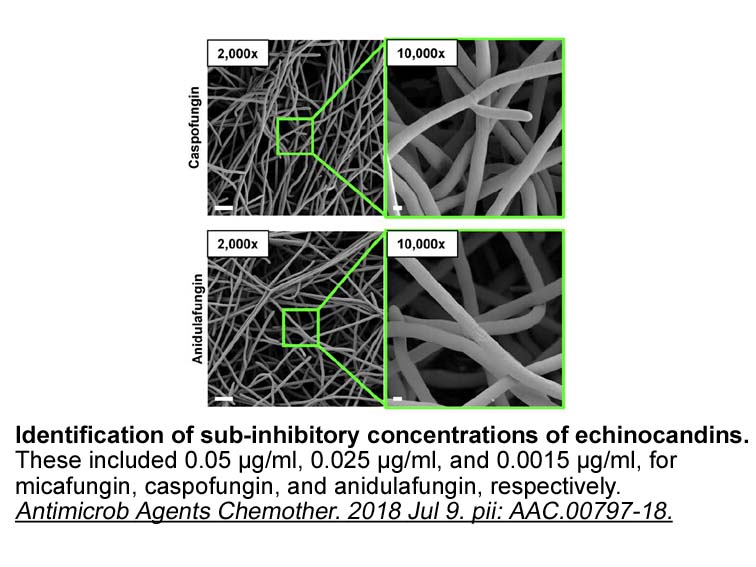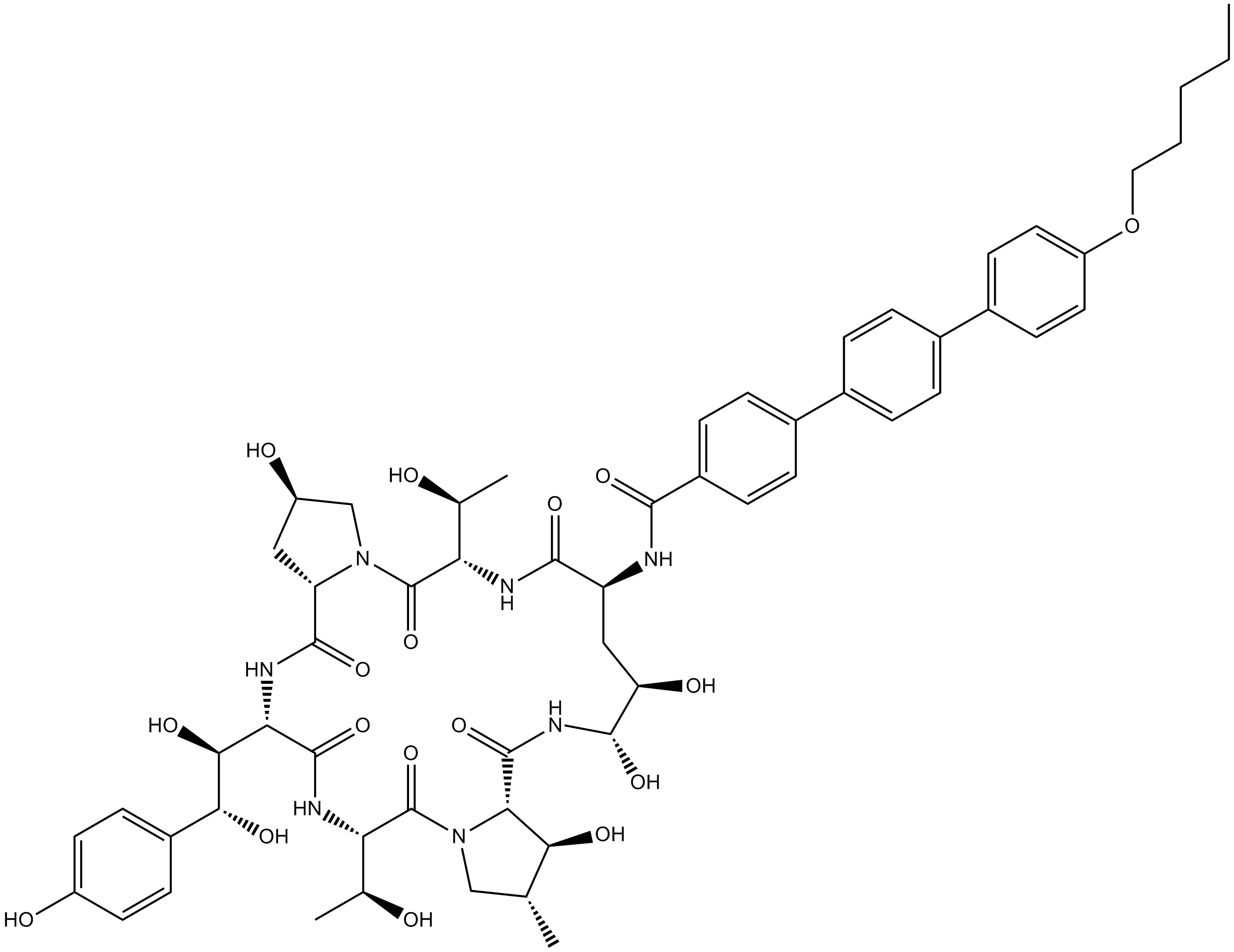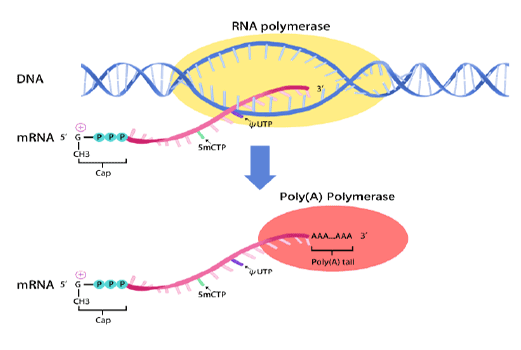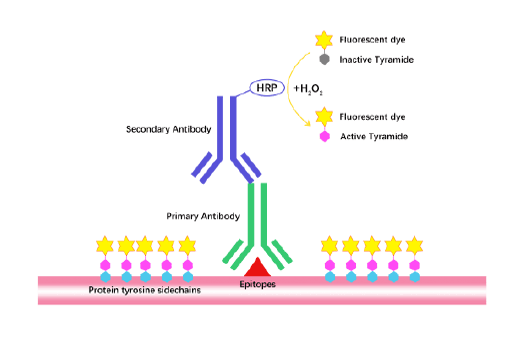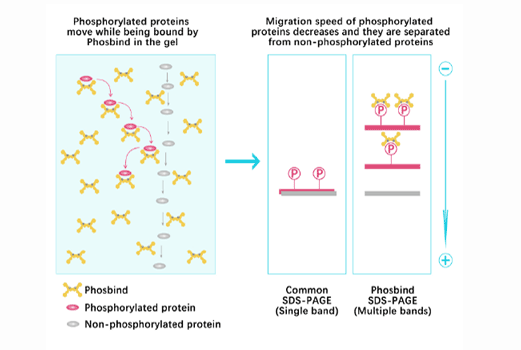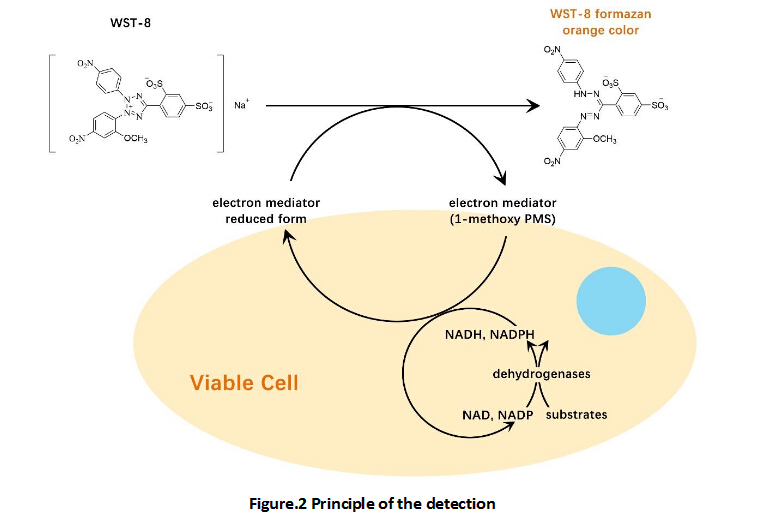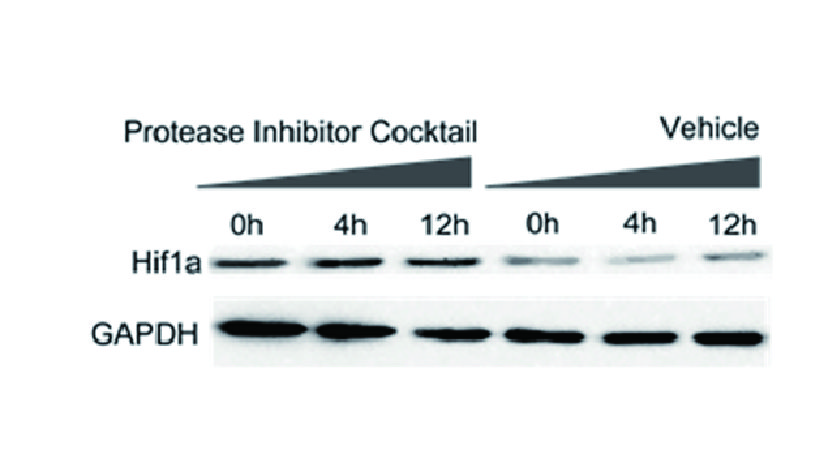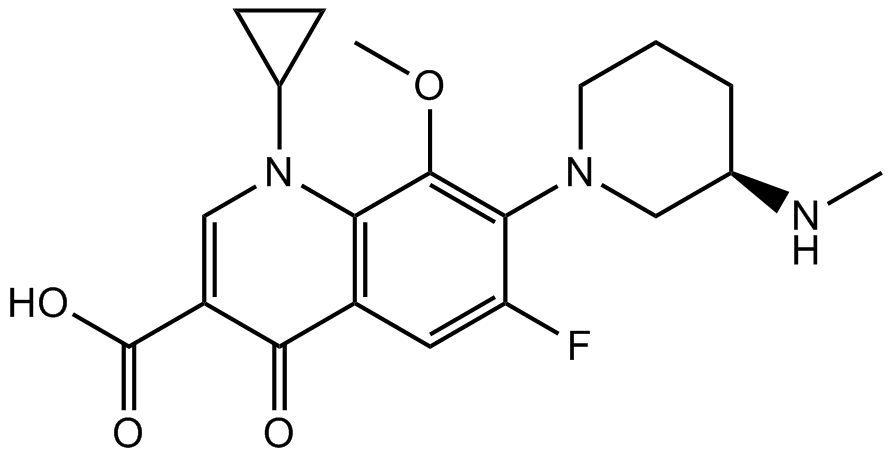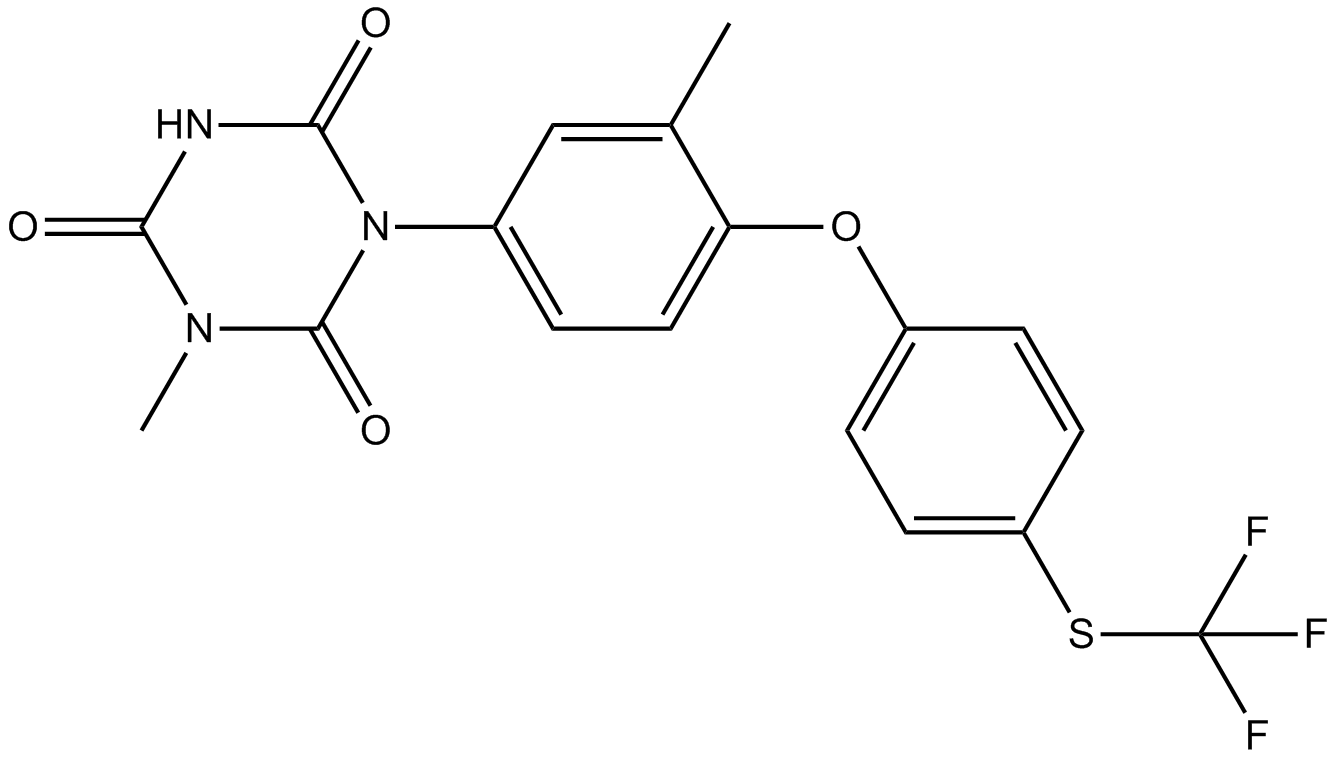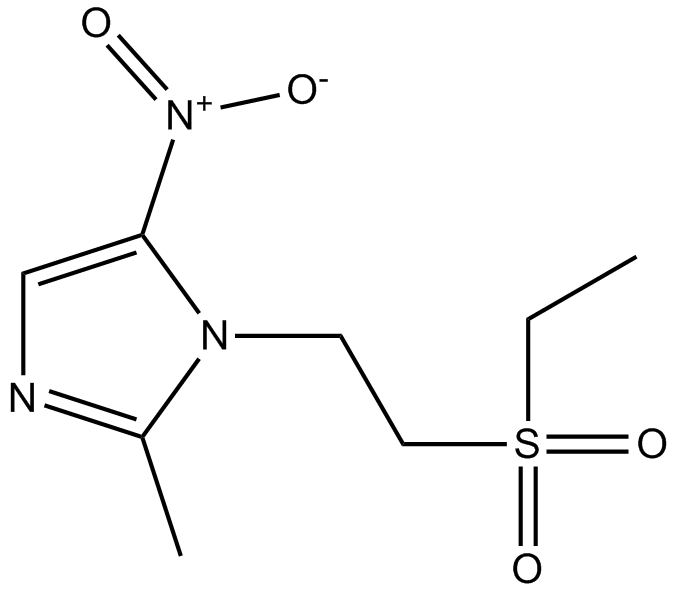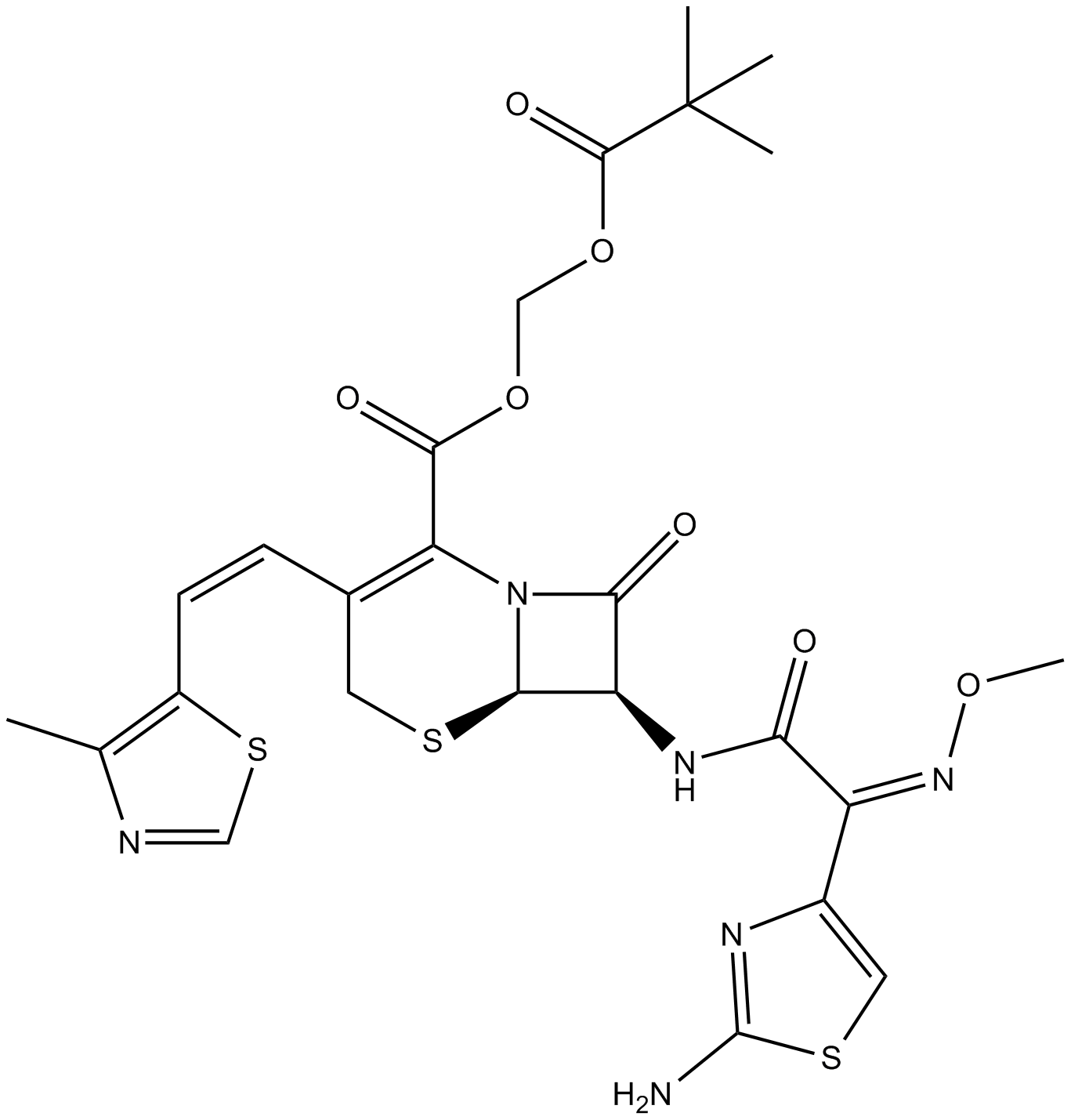Anidulafungin
Anidulafungin (CAS 166663-25-8), also known as LY-303366, is a semisynthetic derivative of echinocandin B exhibiting antifungal activity. It acts by inhibiting fungal cell wall synthesis through interference with the enzyme β-(1,3)-D-glucan synthase. In vitro analyses demonstrate that Anidulafungin inhibits various Candida species, including C. albicans, C. glabrata, C. tropicalis, and C. parapsilosis (MIC90: 0.08, 0.32, 0.32, 5.12 μg/ml, respectively), as well as Aspergillus species (MIC90: ~0.02 μg/ml). Lack of significant efficacy was shown against Cryptococcus neoformans and Blastomyces dermatitidis. This compound is useful for research exploring antifungal resistance mechanisms and therapeutics.
| Physical Appearance | A solid |
| Storage | Store at -20°C |
| M.Wt | 1140.24 |
| Cas No. | 166663-25-8 |
| Formula | C58H73N7O17 |
| Solubility | insoluble in EtOH; insoluble in H2O; ≥20.8 mg/mL in DMSO |
| SDF | Download SDF |
| Canonical SMILES | O[C@H]1[C@H](C)CN(C([C@H]([C@H](C)O)NC([C@H]([C@@H]([C@@H](C(C=C2)=CC=C2O)O)O)NC([C@H](C3)N(C([C@H]([C@H](C)O)NC4=O)=O)C[C@@H]3O)=O)=O)=O)[C@@H]1C(N[C@H]([C@@H](C[C@@H]4NC(C5=CC=C(C6=CC=C(C(C=C7)=CC=C7OCCCCC)C=C6)C=C5)=O)O)O)=O |
| Shipping Condition | Small Molecules with Blue Ice, Modified Nucleotides with Dry Ice. |
| General tips | We do not recommend long-term storage for the solution, please use it up soon. |
| Antifungal assay [1]: | |
|
Fungi |
Aspergillus species |
|
Preparation method |
The solubility of this compound in DMSO is > 10 mM. General tips for obtaining a higher concentration: Please warm the tube at 37 °C for 10 minutes and/or shake it in the ultrasonic bath for a while. Stock solution can be stored below - 20 °C for several months. |
|
Reacting condition |
48 hrs |
|
Applications |
Anidulafungin potently inhibited Aspergillus species, with a MEC90 value of 0.02 mg/mL. The ranges of MIC and MEC of Anidulafungin against A. fumigatus, A. flavus, A. niger, A. glaucus group and A. versicolor were 0.00125 ~ 0.005 μ g/mL and 0.005 ~ 10.24 μ g/mL, respectively. |
| Animal experiment [2]: | |
|
Animal models |
Mice infected with strains FMR 9965, FMR 8756, FMR 9960, FMR 10084 or FMR 9966 of Aspergillus flavus |
|
Dosage form |
1, 5 or 10 mg/kg; i.p.; q.d., for 7 days |
|
Applications |
In Mice infected with strains FMR 9965, FMR 8756, FMR 9960, FMR 10084 or FMR 9966 of Aspergillus flavus, Anidulafungin at the doses of 5 and 10 mg/kg significantly prolonged survival. There were no substantial difference between the doses of 5 and 10 mg/kg. Moreover, in spleens and kidneys, Anidulafungin significantly reduced the fungal load in a dose-dependent manner. According to the bioassay results, at day 5 of treatment, the Anidulafungin serum levels were beyond the corresponding minimum effective concentrations of all strains. |
|
Other notes |
Please test the solubility of all compounds indoor, and the actual solubility may slightly differ with the theoretical value. This is caused by an experimental system error and it is normal. |
|
References: [1]. Zhanel GG1, Karlowsky JA, Harding GA, Balko TV, Zelenitsky SA, Friesen M, Kabani A, Turik M, Hoban DJ. In vitro activity of a new semisynthetic echinocandin, LY-303366, against systemic isolates of Candida species, Cryptococcus neoformans, Blastomyces dermatitidis, and Aspergillus species. Antimicrob Agents Chemother. 1997 Apr;41(4):863-5. [2]. Calvo E, Pastor FJ, Mayayo E, Salas V, Guarro J. In vitro activity and in vivo efficacy of anidulafungin in murine infections by Aspergillus flavus. Antimicrob Agents Chemother. 2011 Mar;55(3):1290-2. |
|
Quality Control & MSDS
- View current batch:
Chemical structure
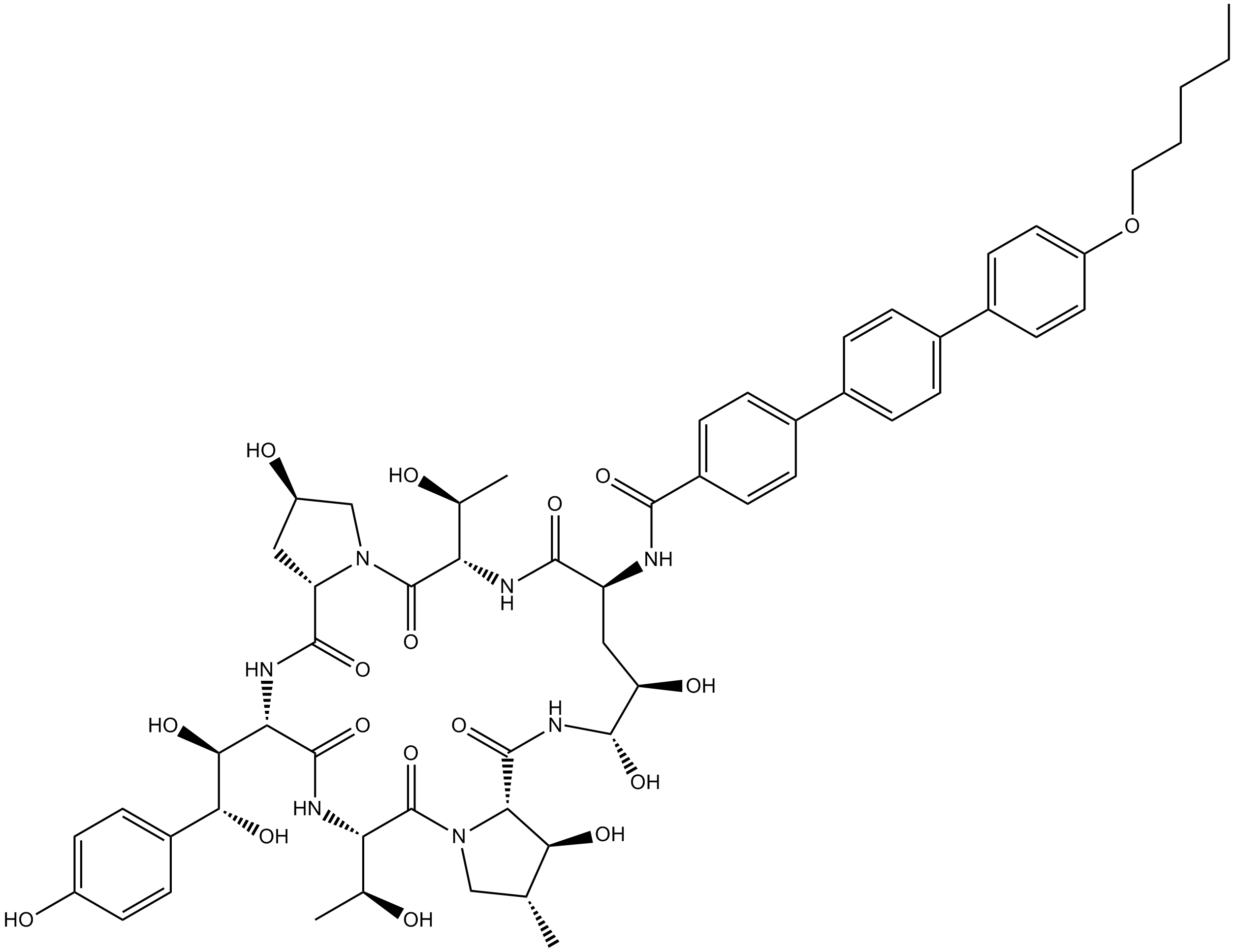
Related Biological Data
